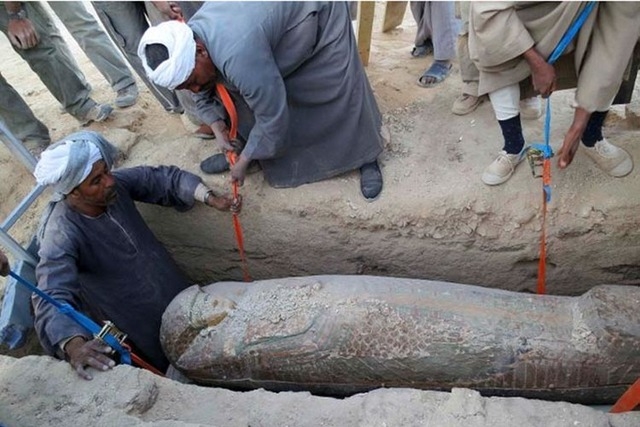Relic experts believe someone stole 1,000-year-old mummified monk
Chinese relic experts claim that a 1,000-year-old mummified monk encased in a Buddha statue was stolen from a village temple in Eastern China in 1995, state media reported.
The mummy made international headlines last year when it first showcased at Drents Museum in the Netherlands.
The Cultural Relic Bureau in Fujian province launched an investigation and found photos and historical records suggesting the statue belonged to a village temple where it was worshiped as an ancestor.
The bureau will continue the investigation and report to national cultural authorities to seek repatriation in compliance with normal procedures, a spokesperson told the state-run Xinhua news agency on Sunday.
The statue, currently in possession of a Dutch private collector, was being housed at the Hungarian Natural History Museum as a part of a European tour.
The museum announced on their website that the mummy, originally scheduled to be on display until May, has been pulled from the exhibition at “the request of the loaning partner” — the Drents Museum.
Unsolved mystery
It’s unclear exactly when or how the statue made its way to a market in the Netherlands where a private buyer bought it in 1996.
Drents Museum said the owner, who prefers to remain anonymous, had bought it legally.
The mummy was discovered when the owner brought it to an expert for restoration.
But it wasn’t until a team of researchers and scientists did a CT scan — a comprehensive three dimensional X-ray image — last year, did they discover the mummy’s organs were missing.
“We thought it would be lung tissue, but instead we found little scraps of paper covered with Chinese characters,” said Vincent van Vilsteren, an archaeology curator from Drents Museum.
The mummy was found sitting on a bundle of cloth covered in Chinese inscriptions, revealing its identity as a Buddhist monk called Liuquan who may have practiced “self-mummification” to prepare for life after death.
The process of self-mummification is a known tradition in countries like Japan, China and Thailand, and was practiced more than a thousand years ago.
The elaborate and arduous process includes eating a special diet and drinking a poisonous tea so the body would be too toxic to be eaten by maggots. The few monks that were able to successfully complete the process were highly revered.
“We suspect that for the first 200 years, the mummy was exposed and worshiped in a Buddhist temple in China … only in the 14th century did they do all the work to transform it into a nice statue,” said van Vilsteren.
Researchers are still waiting on DNA analysis results to help trace the mummy back to its exact location in China.


















